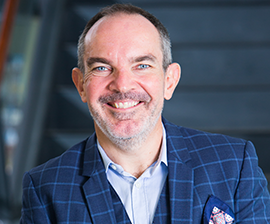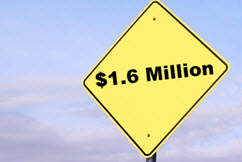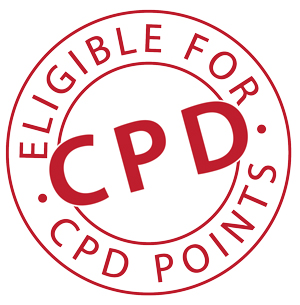|
Conflict between a Reversionary Pension (RP) nomination and a Binding Death Benefit Nomination (BDBN) in a Self Managed Super Fund context
At the time of commencing a reversionary pension, the trustees must ensure if there are any binding death benefit nomination attached to their pension superannuation interest are revoked, otherwise the two documents will clash and dispute will arise if nominations are made out to two different individuals. If a member dies with reversionary pension document and if there is a BDBN pertaining to income stream is not revoked, then the trustees will have to deal with two valid documents. This can create many problems, e.g. which document should take precedence or if there is a conflict, the trustees will have to rely on the trust deed for guidance, some trust deeds are silent on this issue, this article discuss what options trustees have to avoid any future conflicts.
Click here to learn how to commence a pension in an SMSF
Reversionary Pension VS Binding Death Benefit Nomination In normal circumstances if there is a BDBN in place which reverts an income stream to the beneficiary, there should be no need to prepare any RP documents at the time of commencing a pension, provided the trust deed allows BDBN to pay pensions to the beneficiary. It has been expressly noted by ATO that a BDBN by itself may not be enough to commence a pension automatically for the beneficiary, BDBN needs the support of the governing rules of the fund.
In most cases Self Managed Super Fund (SMSF) are established when members are usually in accumulation phase and binding or non-binding nominations are executed by members to distribute (as a pension or lump sum) their accumulation superannuation interests in case of death. However, when any member commences an income stream, situation changes and depending on the size of the superannuation interest, it is possible that the member will need both documents. A reversionary pension to look after the income stream and a BDBN for any accumulation interest. Pension documents can be reversionary or non-reversionary, if the income stream is non-reversionary, the superannuation interest of the deceased must be paid out as per SISR 6.21 as soon as practical. However, many trust deeds give trustees the right to pay a death benefit pension to beneficiaries instead of a lump sum, if requested by the beneficiaries. Since there is no case law to guide professionals, SMSF industry is divided in their opinion on which one of the two document should take precedence. Many advisors believe since there is a valid reversionary pension in place (which creates a contractual right), there is nothing left over as a part of death benefit to be distributed to the BDBN beneficiary from the pension account (assets), but this is not entirely true as you will read below. In spite of what the BDBN or RP enforces on the trustees, it is important that trustees find guidelines in the governing rules of the fund. Many trust deed are either silent or do not provide a clear guidance to the trustees to which document will prevail. To make matters worse, there is no consistency among trust deeds on which document will take priority.
Click here to learn more about BDBN
|
| click here to unsubscribe from the mailing list |
Phones are not working due to Optus outage, Please click on Live chat Button.
- $139 + ASIC FEECompany Registration
- Fr $55 + ASIC FEEBusiness Name Registration
- $148.5 (Incl. GST)SMSF
Trust Deed - Fr $165 (Incl. GST)SMSF
Tools- Reduce cost of Documents
$55.00 - Pay By Vouchers - Information
- Commence Account Based Pension
($248.5 incl. GST) - Deed of Confirmation
($248.5 incl. GST) - Add Member to SMSF
($248.5 incl. GST) - Delete Member from SMSF
($248.5 incl. GST) - Change Individual Trustee to Corporate
($248.5 incl. GST) - Change Corporate Trustee to Individuals
($248.5 incl. GST) - Change Corporate Trustee
($248.5 incl. GST) - Declaration of Trust
($220 incl. GST) - SMSF Loan Agreement
($220 incl. GST) - Binding Death Nomination
($75 incl. GST)
- Reduce cost of Documents
- $165 (Incl. GST)SMSF
Borrowing - $97.50 (Incl. GST)Actuarial
Certificate - $495 (Incl. GST)Quantity
Surveyor Rep - Fr $125 (Incl. GST)Trusts
- Reduce cost of Documents
$55.00 - Pay By Vouchers - Information
- Discretionary Trust Deed
($148.5 incl. GST)
($250 incl. GST with Company Trustee) - How Discretionary Trusts work
- Unit Trust Deed
($148.5 incl. GST)
($250 incl. GST with Company Trustee) - How Unit Trusts work
- Fixed Unit Trust Deed
($275 incl. GST)
($372.5 incl. GST with Company Trustee) - How Fixed Unit Trusts work
- Why Use Us
- Document Printing
- Reduce cost of Documents
- FreeJobs
- Our
Fees
-
Register a Company or Business Name 24/7,
we have a direct link with ASICHelping you to set up the right business structure online
Fast, Simple and Easy application like never before
Register Now -
Full technical support for Family or Discretionary Trust,
Unit Trust and Fixed Unit TrustFully online, legally compliant trust deed instantly delivered to your inbox
One stop solution for your trust structure needs
Register Now -
Simplify SMSF management & updates
with dedicated SMSF SpecialistCreate the most technically robust
Self Managed Super Fund trust deed, online in less than 20 minutesMake changes easily for smoother running of your SMSF by using our SMSF tools
Register Now -
Get Trusted & Accurate SMSF Borrowing documents
and Actuarial Certificates onlineGet your borrowing documents ready with SMSF Experts
specialised in Limited Recourse BorrowingOrder instant Actuarial certificates online to meet your actuarial certificate requirements
Register Now -
Order a Quantity Surveyor Report online
for your investment property anywhere in AustraliaPhysical visit. No online spreadsheet
Claim maximum for your Investment Property
Register Now










 All SMSFAAA webinar certificates will be marked as " FESEA Allocation - Technical competence: acting as a technically proficient professional" .
All SMSFAAA webinar certificates will be marked as " FESEA Allocation - Technical competence: acting as a technically proficient professional" .